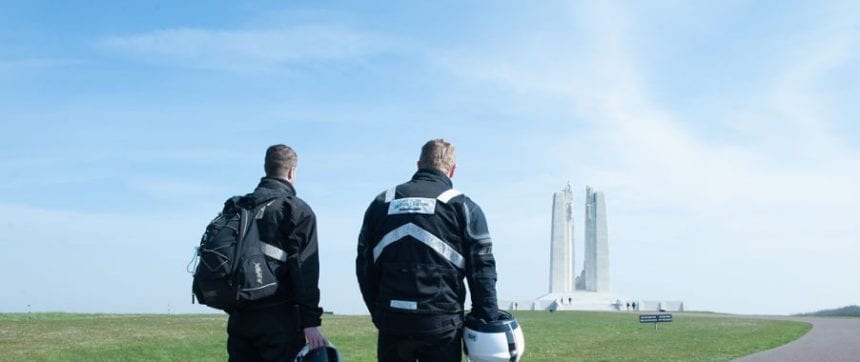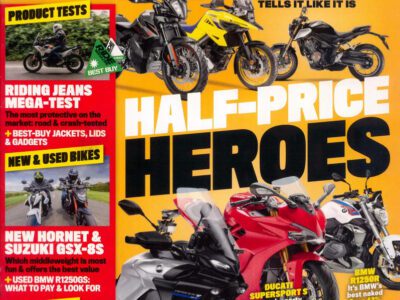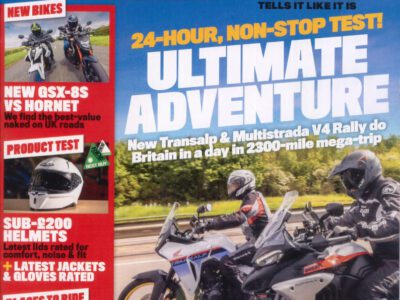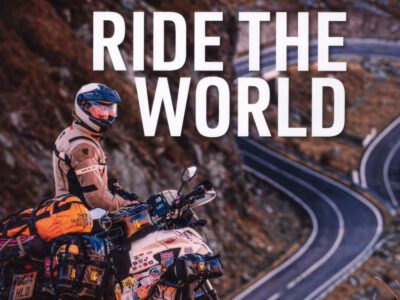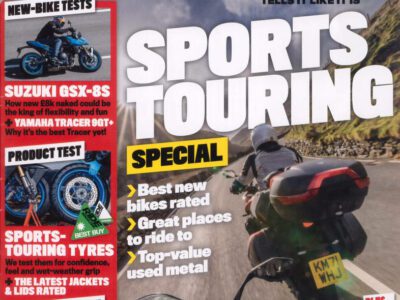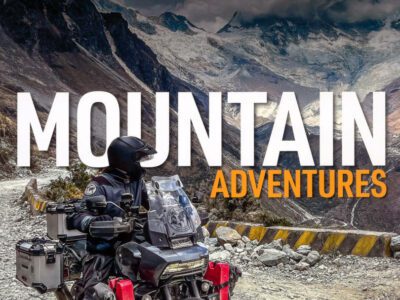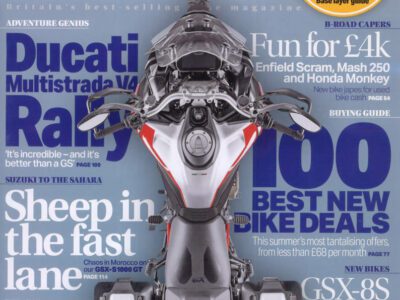My first thought was Flanders Fields. It’s a compact area and the roads are unchallenging but brisk, and it seemed a fun way to experience some history and sociable riding with both my brother and some friends and colleagues at White Dalton. But the moment I mentioned this, my colleague Jo Readman warned me that going to these places was a sobering experience, and not ideal for charging around by bike.
It turned out that she was right: it’s not a ‘fun’ experience. But I was also glad that I’d pressed ahead with the idea. These places are very much worth seeing, and I cannot think of a better way to view these austere landmarks than by motorcycle.
The logistics were easy enough. Dover Premier Inn for an early ferry, land at Calais at 8am after a cholesterol special on the ferry and then hit the road.
Our first stop was Vimy Ridge. This is a grand and imposing monument and the Canadian students who operate as guides and helpers were really friendly. The French officials, less so. We were told to move our bikes for reasons which were far from obvious, but as it’s a place for respect and quiet reflection we did.
As we walked closer to the imposing monument we started seeing the outlines of the names of the fallen Canadians and the purpose of the monument became clearer. There were pleasant walks around the sanitised trenches, but then we went into the museum and this rapidly changed my perspective. The exhibits included photographs showing exhausted men, sometimes grimly cheerful for the camera, faces filthy, with the weary look of people who had not slept properly, eaten properly or even been dry for months on end.
One thing was already becoming clear: you do not rush around these monuments. At Vimy Ridge a gaggle of English schoolkids, probably about 15 years old, got off a coach with the good natured bickering and horseplay you’d expect. But as they stepped into the monument area the hubbub stopped, and they stood reading the lists of the fallen.
I could not help but notice the much more modest Moroccan Memorial directly opposite Vimy. The less exalted position given to ‘colonial’ troops jarred with me. Feeling sober and reflective, we set off for lunch in the pretty Flanders town of Arras, and post-food we headed to the Indian War Memorial at Richebourg, which is well off the beaten track. It took a little bit of finding, perched on the edge of a field on a roundabout, but I found this site to have a greater impact on me than the massive Canadian Memorial, which I think just overwhelmed me.
The Indian Memorial had the names of hundreds of British officers, Indian NCOs, Sepoys and Ghurkhas. Arranged in a circle, the names of these professional soldiers seemed so much more manageable than the vast scale of the monument at Vimy. The circular nature of the memorial gave a spot to sit and reflect.
The part of the Indian Memorial which impacted on me the hardest was the note about the shared graves that the labourers were put into. There was something especially sad in imagining an illiterate Indian being swept up from his harsh rural life, leaving an equally bewildered family back home, finding himself in a cold northern European hell hole, and his remains pitched into a cold pit.
After a night in the city of Ypres we went to the Last Post ceremony at the Menin Gate. The ceremony was simple, crowded and strangely atmospheric. The bugle was played by a pitch-perfect former British Fusilier, resplendent in his hackle and medals. The crowd was a mix of all ages – from some old soldiers in wheelchairs to teenage kids in skateboarding shorts – and all maintained a thoughtful silence.
I walked through the Menin Gate and, along with my brother, started reading the horrendous roll call of the untraced dead of the Ypres offensive. It was a sobering read. Names of long-dead young men, too many for the brain to comprehend. Everywhere I looked there were more and more names.
Something about the ferocity and volume of the slaughter resonates with everybody, but it takes different things to bring it home to different people. That sea of names at the Menin Gate really hit me.
Back at our hotel, a pint of local Belgian draft lager went down well. We ate out in Ypres, which was reasonably priced, although vegetarians will not find much there. And as Martin and Gavin found out, the local bottled beer needs to be treated with respect. The boys were none too lively the next morning.
After breakfast at the hotel we set off for Tyne Cot cemetery. Do not rely on the Google Maps postcode to find it. Jo, again recalling her school trip, said this was going to be a melancholy experience. You approach through a nondescript car park but then find yourself among the massed ranks of uniformly neat gravestones. To walk upon the ground which held the mortal remains of dead men, snuffed out in their prime, was an extraordinary experience. I could not help but think of all the lost years and grief that those graves held. As I walked round I saw the cap badges of proud old county regiments, many long gone, and graves with teenage soldiers’ details, graves marked with just a regiment or a rank. The reality of the industrial-scale sacrifice was clear.
It was in a very reflective mood that we headed home on the Dunkirk ferry, and of course Dunkirk has a history all of its own. It’s a strange tour. Doing it by bike gives you the freedom to reflect and think. Watching the slickly run coach tours with professional guides and huge knowledge made me glad I was under my own steam.
I can think of no better place than the undistracted interior of a motorcycle helmet to process the thoughts that such an emotionally charged trip can bring. To take in the atmosphere and scale of destruction from a pivotal moment in world history is a chance you will not regret taking. But this is not a ‘tick-box tour’. Four days for the whole trip would be about right. Accommodation, food and drink are not expensive, and someone with not much riding experience wouldn’t be stretched too much by the ride.
The ride itself was nothing special, but the impact of what I saw certainly was.
Andrew Dalton
RiDE Magazine – September 2014

